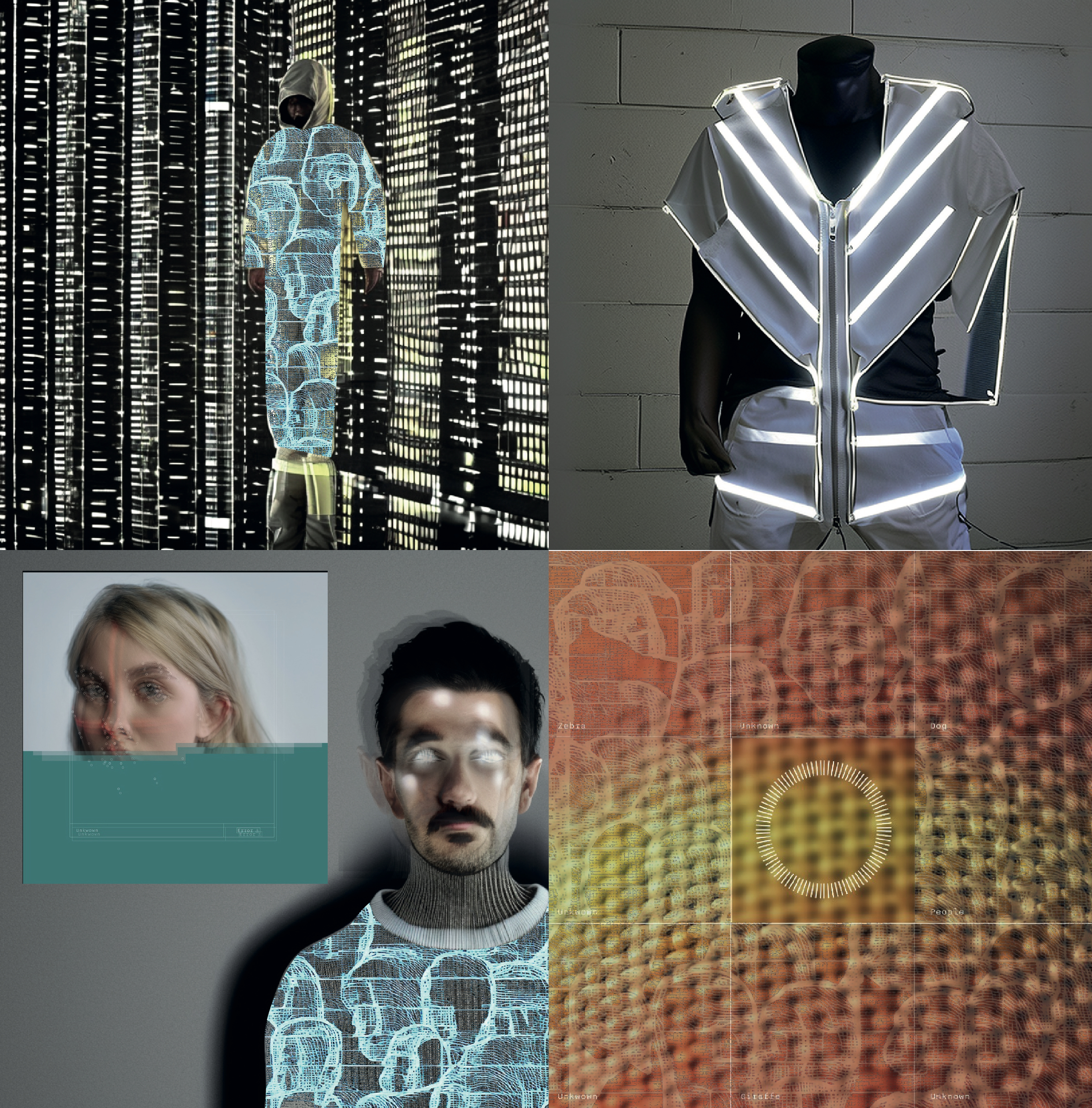Dynamic
Adversarial Coat
A heat circulating coat
with yarns containing fluids, able to diffuse the thermic signature of a person
and even be made adversarial to confuse IR/NIR cameras.

0. Background research
Many private companies and public bodies in authoritarian and democratic states have joined facial recognition technology, used for various purposes. This situation is due to the general absence of a specific regulation that monitors its use. There is no consensus in society regarding the ethics of this technology. Furthermore, there are many doubts concerning the long-term ethical sustainability of facial recognition and its compliance with the law.
The boundary between security and control is decidedly blurred: many cameras do not respect the privacy of individuals and often harm human rights when they are used to discriminate, accuse, power, and manipulate people. From this discussion on privacy and human rights, it was born the will to create a product that would be the spokesperson for these concerns and allow citizens to protect themselves. A collaboration between fashion, engineering, and textile has developed to produce fabric and garments, which confuse facial recognition systems in real-time.
The technological innovation aims to create a system capable of generating adversarial knitted patches that confuse the systems that capture biometric data. By integrating an adversarial algorithm into their jacquard motifs, the garments prevent the wearers from being identified, preserving their privacy.
1. State of the Art
I want to implement my work on static adversarial textiles and garments and create a dynamic adversarial textile (maybe garment).
The first integration of fiber pumps, fiber actuators, and light-responsive fiber in adversarial knit. First try of dynamic adversarial textile.


The person wearing the orange sweater is not categorized as a "person" from the object detection:
2. Jacquard on wholegarment machine MACH2S123
In order to obtain my sample, I first need to run jacquards on the wholegarment machine I have. It's a Shima Seiki Machine, 15 gauge, with 4 needle beds. It's really tricky and complex to use, especially for jacquards and complex structures.
[A Jacquard is the process of combining 2 or more colors together. My goal is to knit a sample with 8 colors]
3. Light actuation
I first start by printing on fabric light actuated ink, as you can see in the video demo. The material reacts to Infrared light. The research about light actuated ink is by Ozgun Kilic Afsar who I collaborate with at Tangible Media Group. You can see more of her projects here.
This will help me when I will insert this material in my jacquards in order to obtain a dynamic structure.
In my jacquards, I will have some parts disappearing thanks to the actuation in the textile.